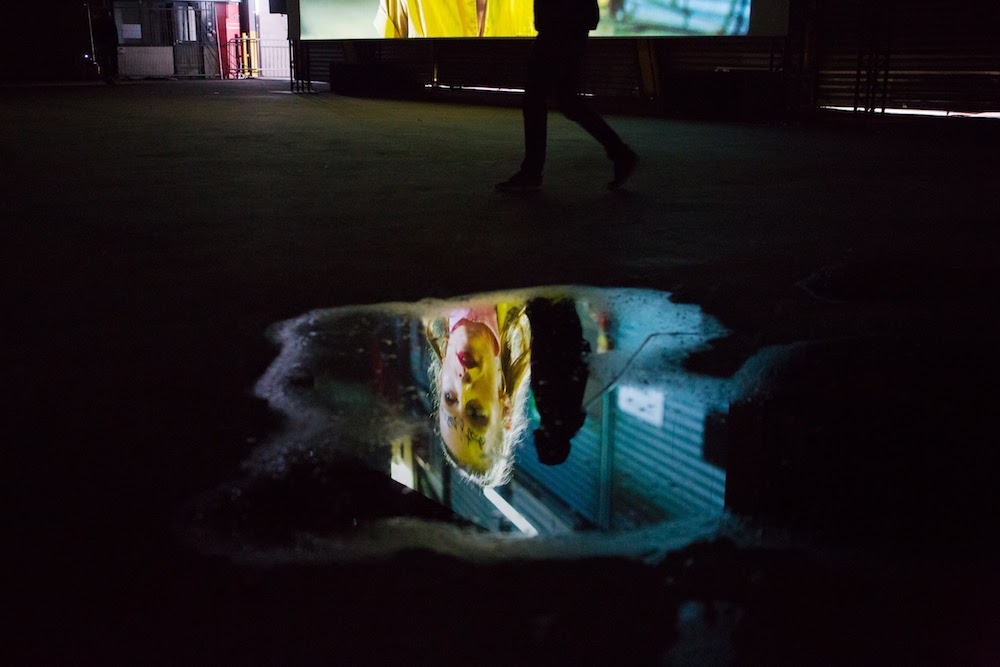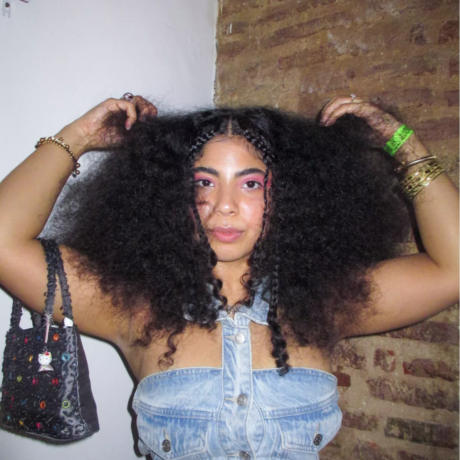
For the last sixteen years Paris’s streets have been transformed, for one night only, into an open-air contemporary art gallery. Nuit Blanche (“White Night”) is a cultural all-nighter in the French capital. While the international event Long Night of Museums (which took place in Paris, as well as many other cities, earlier this year) does not actually last all night, most Nuit Blanche happenings go on until dawn. Last year was devoted to the theme of love, and the 2017 edition, which took place last Saturday night, was all about solidarity and “joining forces”.
Where to begin a nocturnal stroll? I eventually figured that my neighborhood could be a strong starting point for this journey: I live in the middle of a cross stretching out to four unavoidable city landmarks in Paris, among which is the Pantheon, on the right side of my building. Opposite this majestic neo-classical sanctuary is the Luxembourg Gardens, which I almost consider my private garden. I trotted along its black gates currently adorned with watercolours, stopped in front of the French Senate, took a right turn down to the prestigious Place Saint-Sulpice and there I encountered my first Nuit Blanche installation.

The Saint-Sulpice Church, the landmark of the 6th arrondissement, is home to Eugène Delacroix’s paintings as well as to a gnomon, an astronomical measurement device which casts a shadow on the ground in order to determine the position of the sun in the sky. In light of this patrimony, the presence of Ryszard Kiwerski’s works makes perfect sense. Perhaps best known for his movie posters, including one for Nicholas Ray’s Rebel Without a Cause (1955), the late artist spent the last ten years of his life chasing after the sun with a brush. His “parapainting” consisted of drawing the contours of sunspots on any kind of surface.
“His palette was primarily limited to black, white and yellow,” Olga Kiwerski, his daughter tells me, at Nuit Blanche paying tribute to her late father. “Once he began to master this technique, his creativity started to show in the choice of bright colours and materials, mainly ink, pencil, metallic paint and glitter. Basically everything that would appeal to the eye.” It took her three weeks to sort Kiwerski’s canvases by colour and fix twenty-six of them to each of the church’s columns, forming eight vertical banners. “The idea was to bring light into the nave, where the sun rarely comes in.” How does this creation relate to Nuit Blanche’s 2017 edition? “My dad’s work tends to reconcile night and day, darkness and light,” she tells me. “It is almost as if he was working hand in hand with the stars.” The installation will be on display for two weeks.

Next, I head over to the EDF Foundation, whose values are in line with Nuit Blanche’s theme this year. Not only has the organization been supporting public interest projects since 1987 with the hope of “creat[ing] a better world together”, but it belongs to the EDF group, the number-one producer of renewable electricity in Europe. On the first floor is a street-art carte blanche for Nuit Blanche. NEITZ’s letterings, BROK’s cryptically calligraphic messages and AKHIN’s element-shaped faces cover the Foundation’s walls. I can’t take my eyes off the central image of a burning woman. The show was curated by Fabrice Bousteau, editor-in-chief at Beaux-Arts magazine, in partnership with La Place Centre Culturel Hip Hop. Personally, I was more eager to experience Patrick Suchet’s Firefly Booth. The installation functions like a photo booth, except you can customize your picture once it has been taken with strokes of LED lights, before printing or emailing it to yourself.

By two in the morning, I decide my night is coming to a close, but I allow myself an extra hour to see one more work, which is exactly how long Patrick Rimoux’s projections last. There are four of them (on view until 22 October), all located in the 7th arrondissement. From 34 rue Vaneau, I walk past 33 rue Barbet de Jouy and 35 Boulevard des Invalides (all three streets are parallel) to get to the city council. This route was not a one-man job for the team. “I got help from architects and engineers. It took us two months to create this network of installations,” says Rimoux, whose creations essentially revolve around movies. “I like integrating film rolls into my paintings, and my paintings into the videos I project onto public monuments.” To do so, Rimoux and his team conduct an architectural mapping process to capture the entirety of a building and animate his pictures accordingly. “A façade is not a flat screen,” he says. “It has a soul.”
Paris too has a soul. This is why, after viewing Rimoux’s works, I could not resign myself to going home just yet. I ended up dozing on a bench at Place Dauphine square until first light.





